A lush green lawn is an American dream and a hallmark of traditional front yards. However, as environmental consciousness grows and water conservation becomes a priority, more homeowners seek alternatives to traditional grass lawns. Additionally, many properties face challenges like poor soil quality, limited sunlight, or high maintenance costs, making grass a less attractive option.
Fortunately, numerous creative and visually appealing no-grass front yard ideas can transform your yard into an eye-catching and sustainable landscape. This article presents ten beautiful yard landscaping ideas to replace grass and enhance the curb appeal of your property while reducing your environmental footprint.
10 Beautiful Ideas to Replace Grass On Your Front Yard
1. Introduce a Native Plant Garden
If you’re after a front yard that feels real, a native plant garden is the way to go. These plants are tough—they’re made for your local climate, so they don’t need much to survive, which means less watering, fertilizing, and stressing over plant food

Image Credits: studio1515napa.com
Follow the 10 steps in creating a garden in your yard and mix things up with wildflowers, ornamental grasses, and shrubs for a colorful but low-maintenance yard. Toss in a couple of native trees and watch how they fill out the space, giving you shade without asking for too much. Plus, these gardens attract local critters—bees, butterflies, and all kinds of other wildlife—keeping the ecosystem buzzing right in your backyard.
2. Try Out Drought-Tolerant Xeriscaping
If you live in a place where water’s precious, xeriscaping can transform your yard into a water-saving haven. Ditch the thirsty grass and get creative with plants that can handle dry spells. Cacti, succulents, and other drought-tolerant species don’t need constant watering.
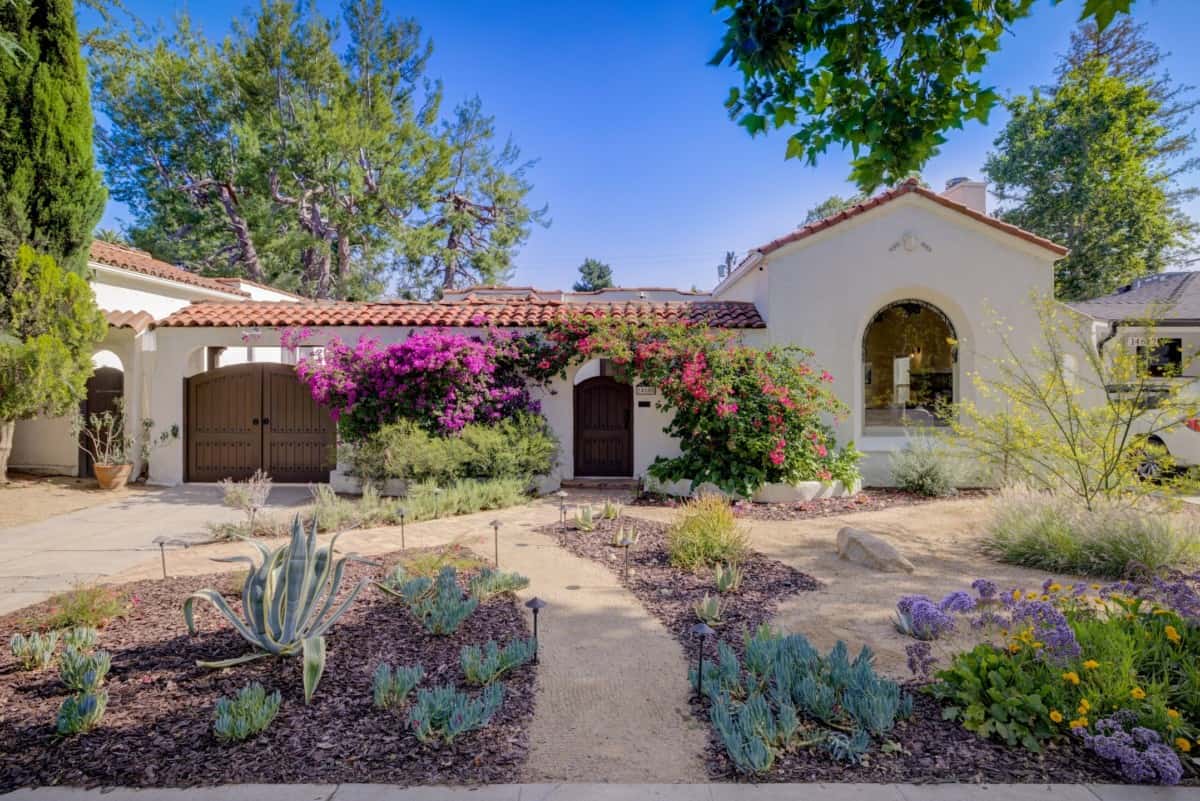
Image Credits: redfin.com
They're all about thriving on their own terms, which means less work for you. Play with different shapes, textures, and heights to add interest. Add in some decorative stones or mulch to keep the moisture in and the weeds out. You’ll get a gorgeous front yard that doesn’t scream “maintenance nightmare.”
3. Design a Rock Garden
Rock gardens aren’t just for mountain retreats—they can add a lot of character to your front yard, especially if you’re in a rocky or uneven space. Think of it as a home improvement idea for a natural art project: mix big boulders with smaller pebbles for an eye-catching arrangement. You can even terrace the rocks to create levels and add depth.
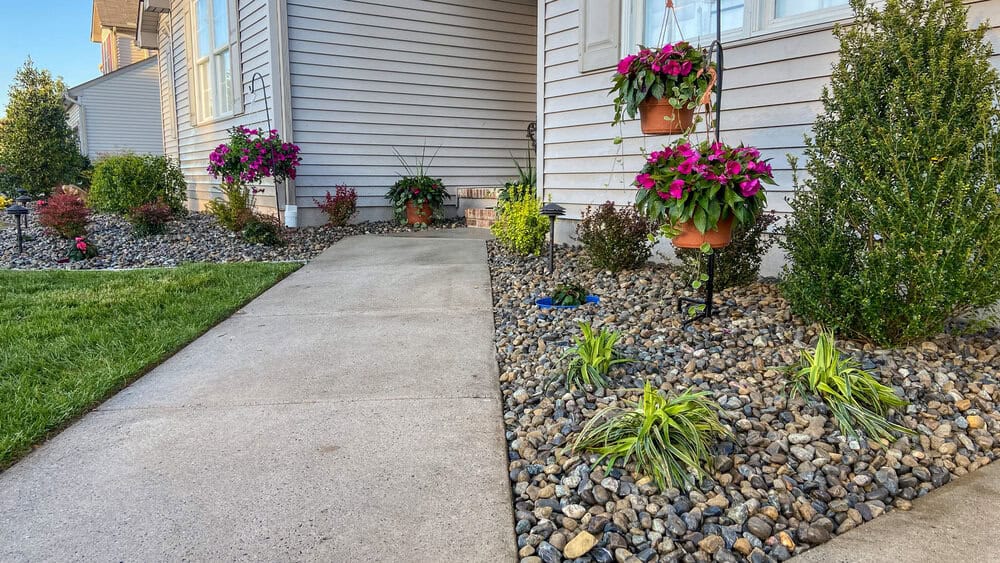
Image Credits: dibiaselandscaping.com
Combine that with some drought-tolerant plants, like lavender or sedums, and you’ve got a low-maintenance, long-lasting landscape that still looks incredible. The rocks stay put, the plants do their thing with minimal care, and the whole thing feels more like a piece of nature than just a “yard.”
4. Use Permeable Pavers
When you think of your driveway or walkway, what comes to mind? If it’s just more concrete, let’s change that. Permeable pavers are not just a practical solution—they add a cool, modern feel to your yard while helping the environment.
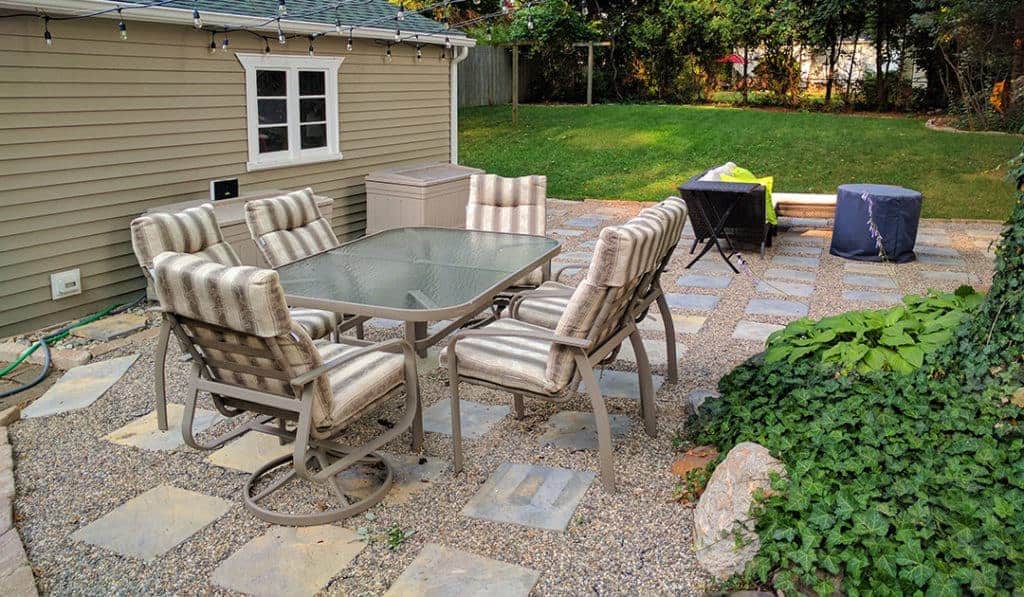
Image Credits: truegridpavers.com
These pavers let rainwater seep through and soak into the ground, which means you’re helping with groundwater recharge and avoiding runoff. You can get them in different colors and styles to match your home, and the best part? Fill the gaps with low-maintenance ground covers like moss or creeping thyme, which gives your yard a soft, lush feel without much effort on your part.
5. Add Artificial Turf
Okay, hear me out. Fake grass used to be bad. Like, “grandma’s plastic couch covers” bad. But these days? It’s shockingly realistic. You get the lush green lawn look without ever having to water, mow, or pray for rain. No muddy footprints, no weird brown patches, just year-round perfection.
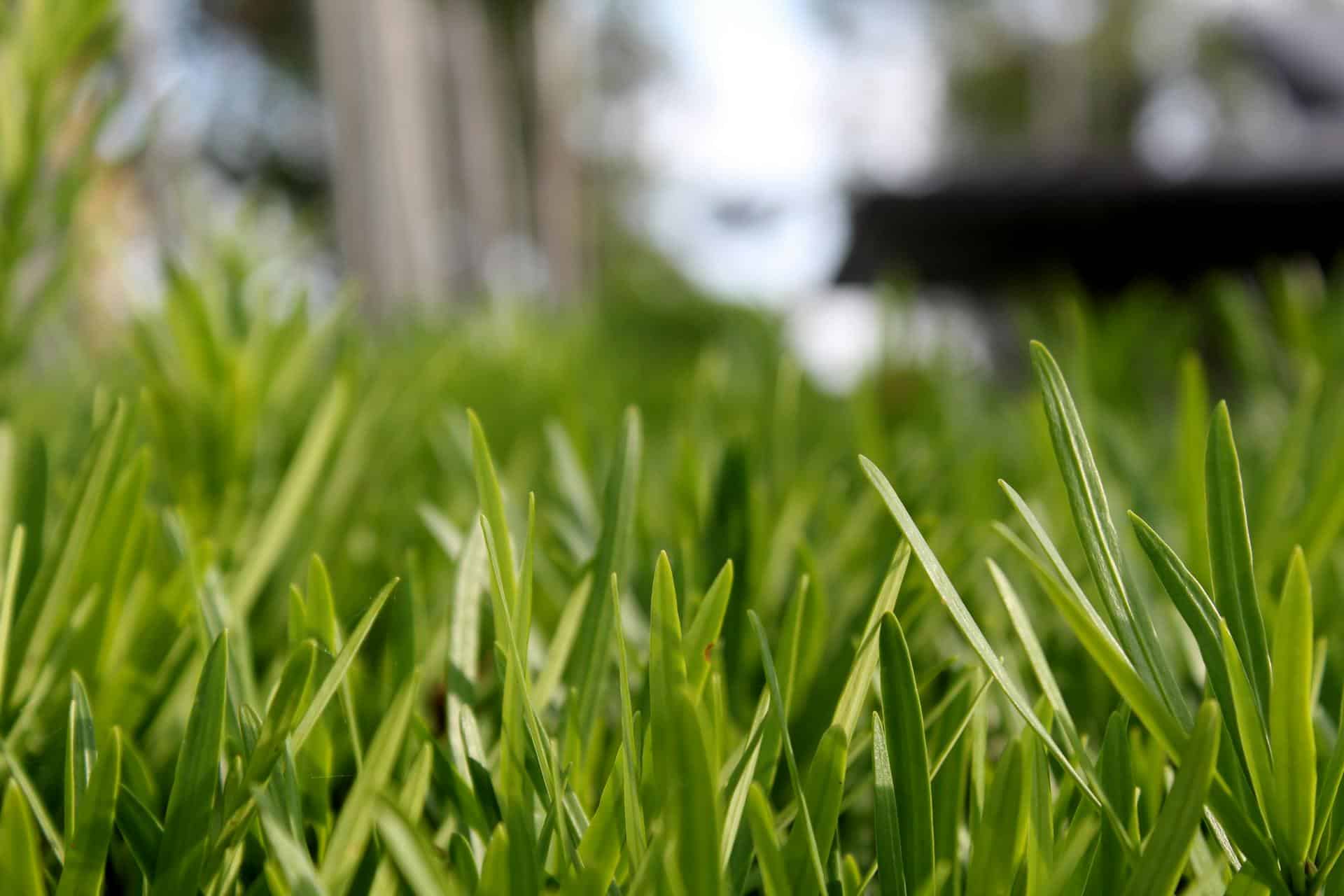
Still, a solid sheet of green can feel a little... too perfect. Break it up with stepping stones, native plants, or some funky rock formations to make it look less like a mini-golf course and more like a thoughtfully designed space. Bonus: If you’ve got kids or pets, they can roll around on it all day without tracking dirt into the house.
6. Plant a Vegetable and Herb Garden
Picture this: Instead of a boring lawn, your front yard is a thriving vegetable and herb garden. Bright tomatoes climbing up trellises, fragrant basil spilling over the edges, a neat row of vibrant peppers daring you to make homemade salsa. Not only is it a conversation starter, but it’s also ridiculously practical.
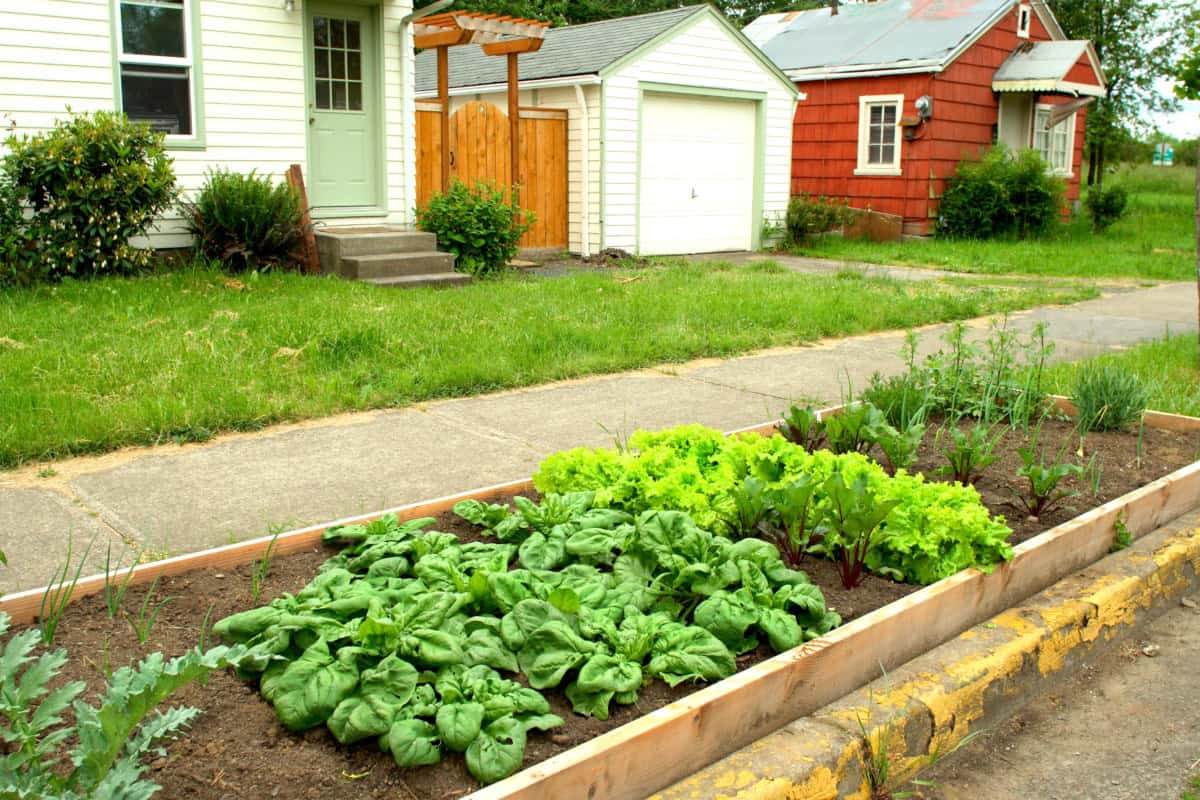
Image Credits: ruralsprout.com
Raised beds keep things organized, and you can mix in flowers to make it look intentional (and keep your HOA from side-eyeing you). Need a focal point? Throw in an archway draped with grapevines or beans. The best part? When your neighbors stop to admire it, you can casually hand them a homegrown cucumber like a total legend.
7. Plant a Wildflower Meadow
A wildflower meadow is a whimsical flower garden idea and a naturalistic alternative to a traditional grass lawn. Of course, a meticulously trimmed lawn is fine. A front yard that looks like it was personally curated by a swarm of butterflies? Way better. Wildflowers don’t just bring color—they create a constantly evolving masterpiece that changes with the seasons. Bees, hummingbirds, and butterflies will turn your yard into their favorite hangout spot, and honestly, who wouldn’t want that?
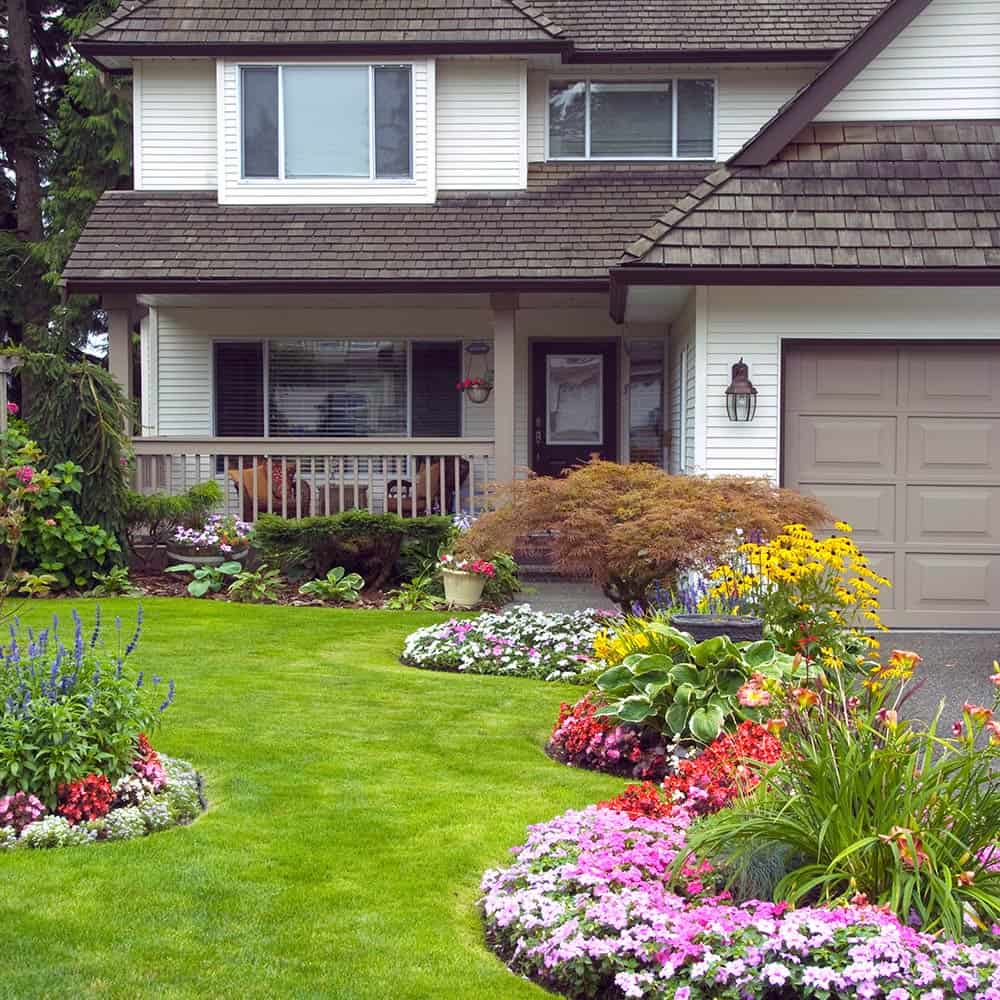
Image Credits: thehomedepot.com
Go for a mix of flowers that bloom at different times so you’ve always got something popping. Let it get a little wild, let it sprawl, and just give it a gentle trim once or twice a year. The best part? It looks like an intentional design choice, but it’s actually just nature doing all the work for you.
8. Introduce a Japanese-Inspired Garden
Imagine walking up to your house and feeling instantly calmer. That’s the magic of a Japanese-inspired garden. It’s not about stuffing every inch with plants—it’s about balance. Gravel paths that crunch underfoot, precisely placed stones, a small water feature bubbling in the background... it’s all designed to make you take a deep breath and chill.
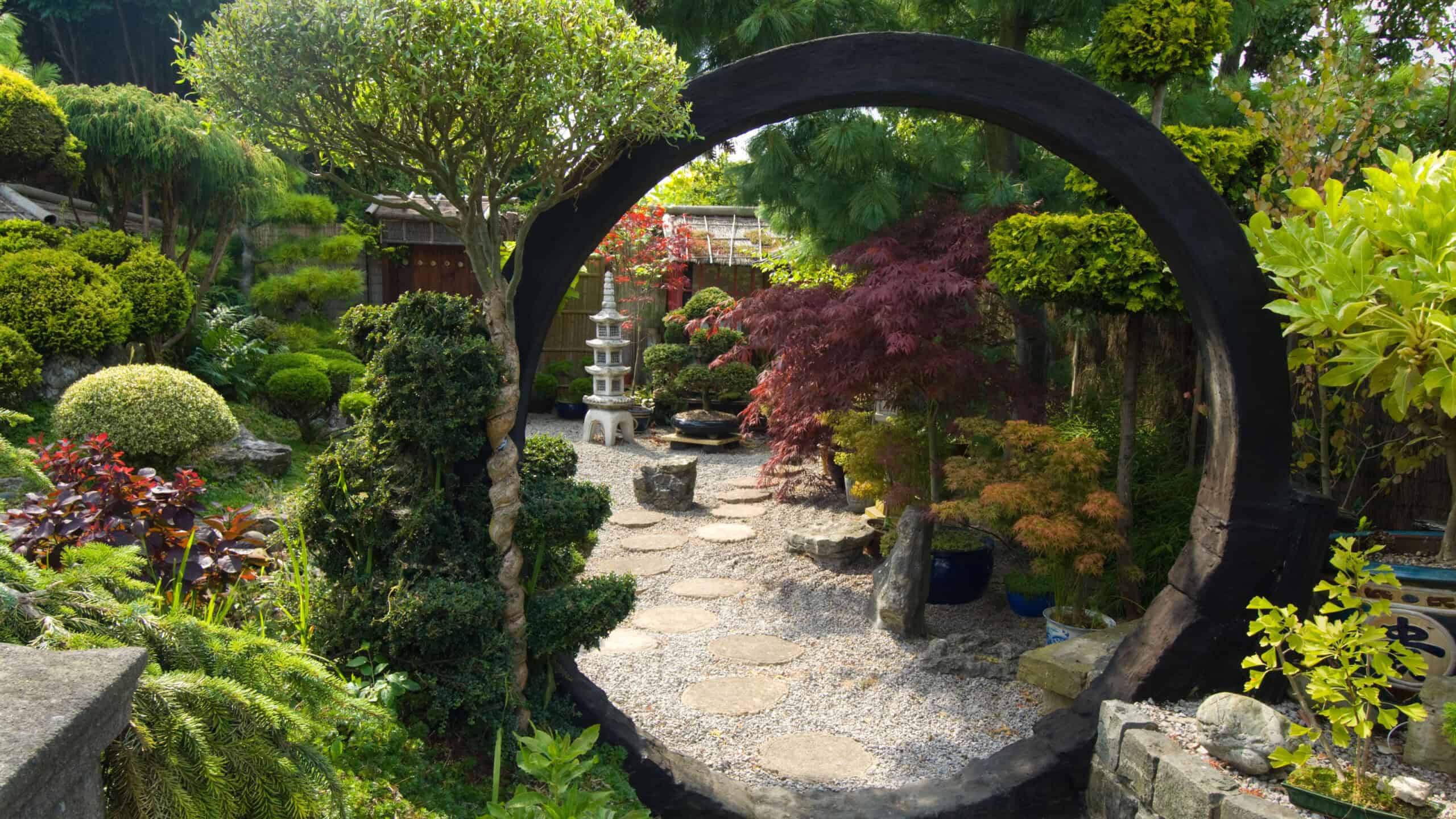
Image Credits; gardeningetc.com
Want to go full-on monastery vibes? Add a simple wooden bench where you can sip tea and reflect on life. A few sculptural elements—maybe a stone lantern or a carefully pruned tree—will complete the look. This isn’t just landscaping; it’s an experience.
9. Create a Moss Garden
If your yard is shady and damp, forget struggling with grass—let moss do its thing. This stuff forms a thick, lush carpet that looks like something straight out of a fantasy movie. No mowing, barely any watering, and it thrives in places where most plants would throw in the towel.
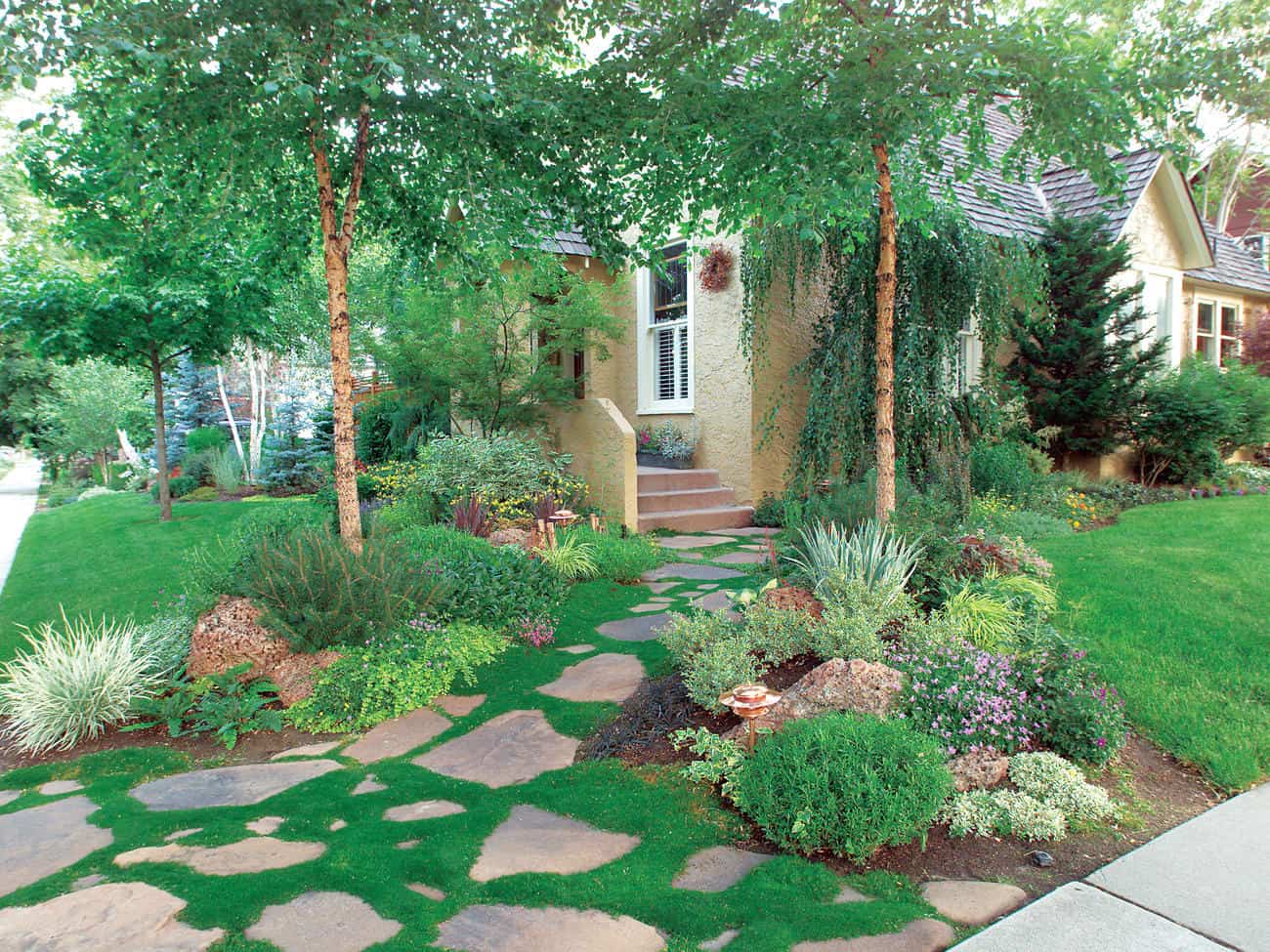
Image Credits: sunset.com
Pair it with smooth stepping stones, tiny ferns, and maybe a few scattered logs, and suddenly your yard has enchanted forest energy. Want to get even weirder? Add a little stone path that leads nowhere in particular just to make people wonder what’s up.
10. Use Sustainable Ground Cover
Imagine never having to mow again, but still having a yard covered in green, living plants. That’s the magic of sustainable ground covers. Creeping thyme smells amazing when you walk on it, ajuga adds deep purple tones, and low-growing sedum thrives in tough conditions.
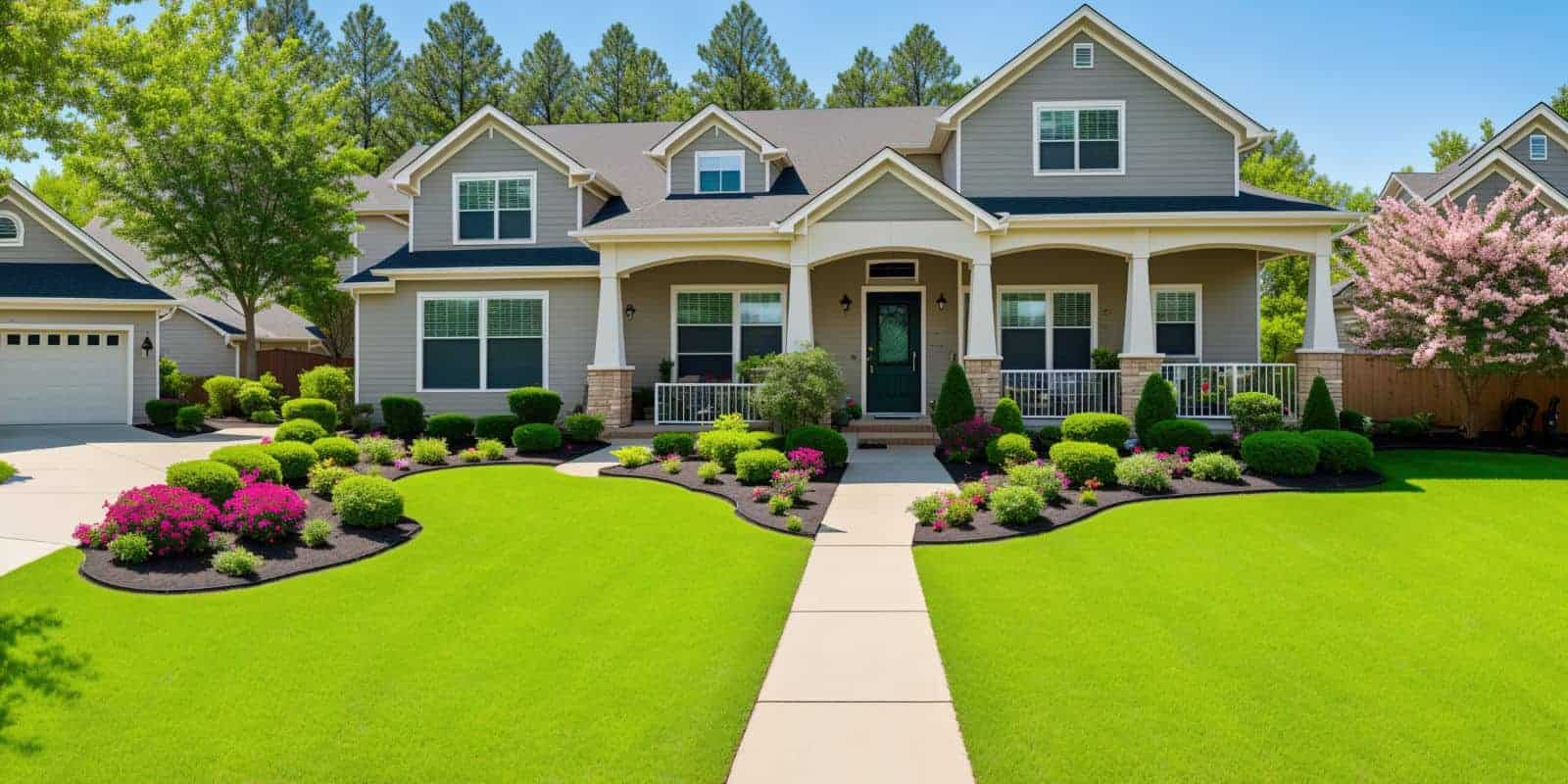
Image Credits: idealturf.com
These plants hug the ground, suppress weeds, and give your yard texture without needing constant care. Throw in a few larger plants or decorative rocks, and you’ve got an effortlessly cool landscape that looks completely intentional (even if you barely touch it).
Benefits Of Exploring Grass-Free Alternatives On Your Front Yard
So, you’re thinking about saying goodbye to your front lawn? Good call. Traditional grass is high-maintenance, thirsty, and, honestly, kind of a diva. But swapping it out for something smarter isn’t just practical—it’s a total game-changer for your yard. Here’s why:
1. Environmental Sustainability
a). Water Scarcity
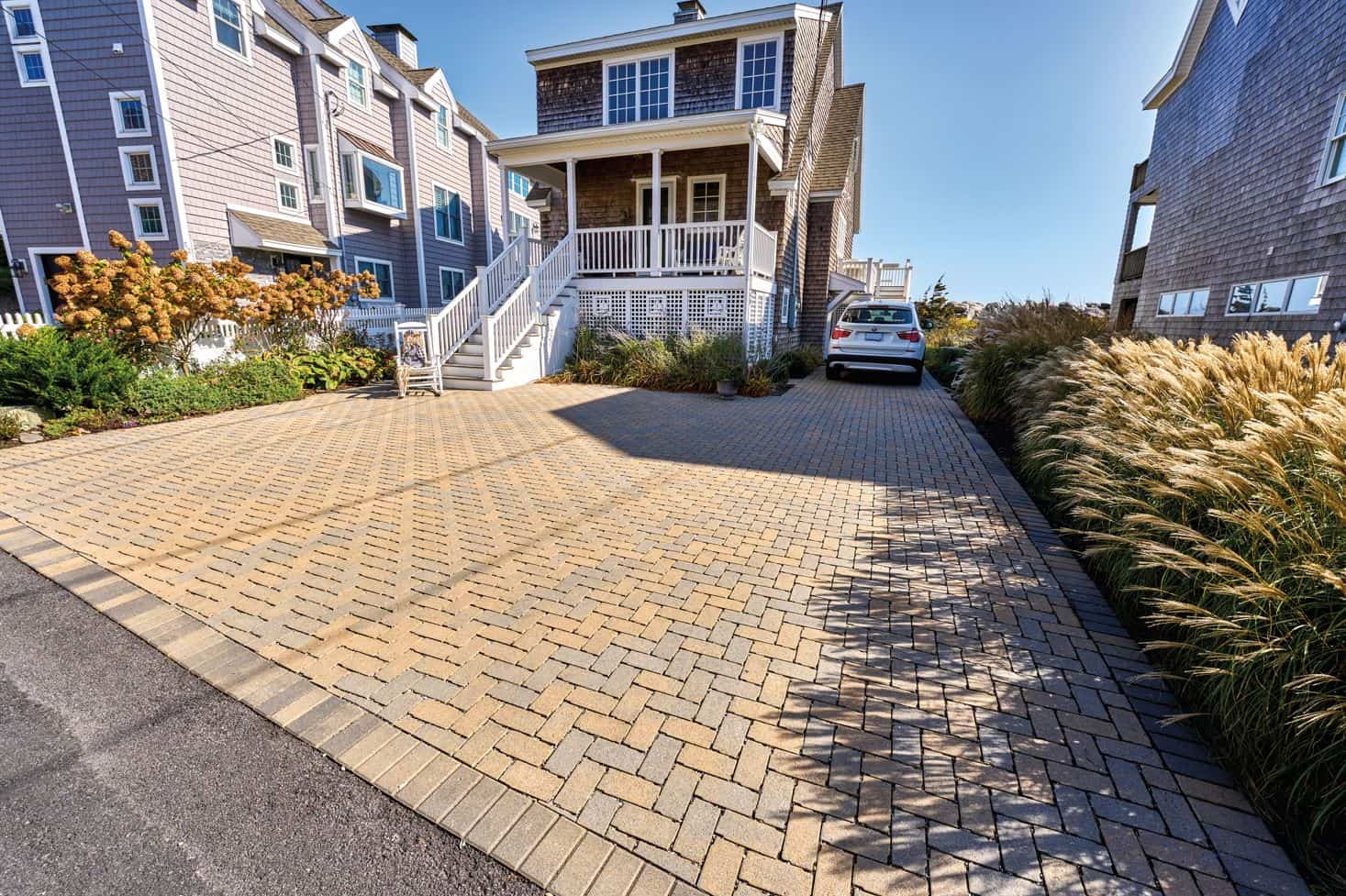
Image Credits: idealconcreteblock.com
A traditional lawn drinks water like it’s running a marathon in the desert. Keeping it green means dumping gallons of H₂O on it regularly, which makes no sense if you live somewhere that gets, like, three drops of rain a year. Grass-free alternatives—think xeriscaping, native plant gardens, or even gravel landscapes—can survive (and thrive) with way less water.
b). Chemical Reduction
Maintaining that flawless green carpet usually means pumping it full of fertilizers, weed killers, and pesticides. Not only do those chemicals mess with the soil and water supply, but they can also be bad news for pets, kids, and basically anything alive. By swapping to a low-maintenance landscape, you’re cutting out all that extra junk.
2. Reduced Maintenance
a). Time-Saving
A lawn is like a needy pet that never stops growing. If you’d rather not spend your weekends mowing, trimming, and edging, consider something that doesn’t demand constant attention. Gravel paths, ground covers, or even a wildflower meadow mean less upkeep and more free time.

Image Credits: countryliving.com
b). Financial Savings
Between buying a lawnmower, paying for fertilizer, and watching your water bill climb every summer, keeping a traditional lawn looking fresh can be expensive. Drought-friendly plants or decorative hardscaping will cost you less in the long run.
3. Biodiversity and Wildlife Habitat
a). Supporting Local Ecosystems
A front lawn doesn’t exactly scream “ecosystem.” It’s mostly just grass and… more grass. But swap it out for native plants, and suddenly, your yard is a paradise for butterflies, bees, and birds. It’s like upgrading from a generic parking lot to a buzzing, biodiverse nature reserve.

Image Credits: houzz.com
b). Pollinator-Friendly
Bees and butterflies are out there working hard to keep our food system running, but they’re losing habitat fast. A lawn-free yard packed with nectar-rich flowers gives them a much-needed food source—and makes your yard look stunning in the process.
4. Improved Soil Health
a). Enhanced Drainage
All that grass gets compacted over time, making it hard for rainwater to soak in properly. The result? Water runoff that erodes soil and carries chemicals straight into nearby waterways. Permeable surfaces like gravel, mulch, or native ground covers let rainwater do what it’s supposed to—actually absorb into the earth.

Image Credits: angi.com
b). Nutrient Cycling
Plants like clover, wildflowers, and native shrubs actually improve soil over time. Their roots help aerate it, and when they shed leaves or die back, they return nutrients right back into the ground. Grass, on the other hand? Not so much.
5. Aesthetics and Curb Appeal
a). Individual Expression
A lawn is just… there. It’s green, it’s flat, and it looks exactly like every other yard on the block. But replacing it with a rock garden, a winding stone path, or a mix of wildflowers? That’s a front yard with some personality. Whether you go for a sleek modern vibe or a lush, overgrown look, it’s all about making your front yard landscaping yours.
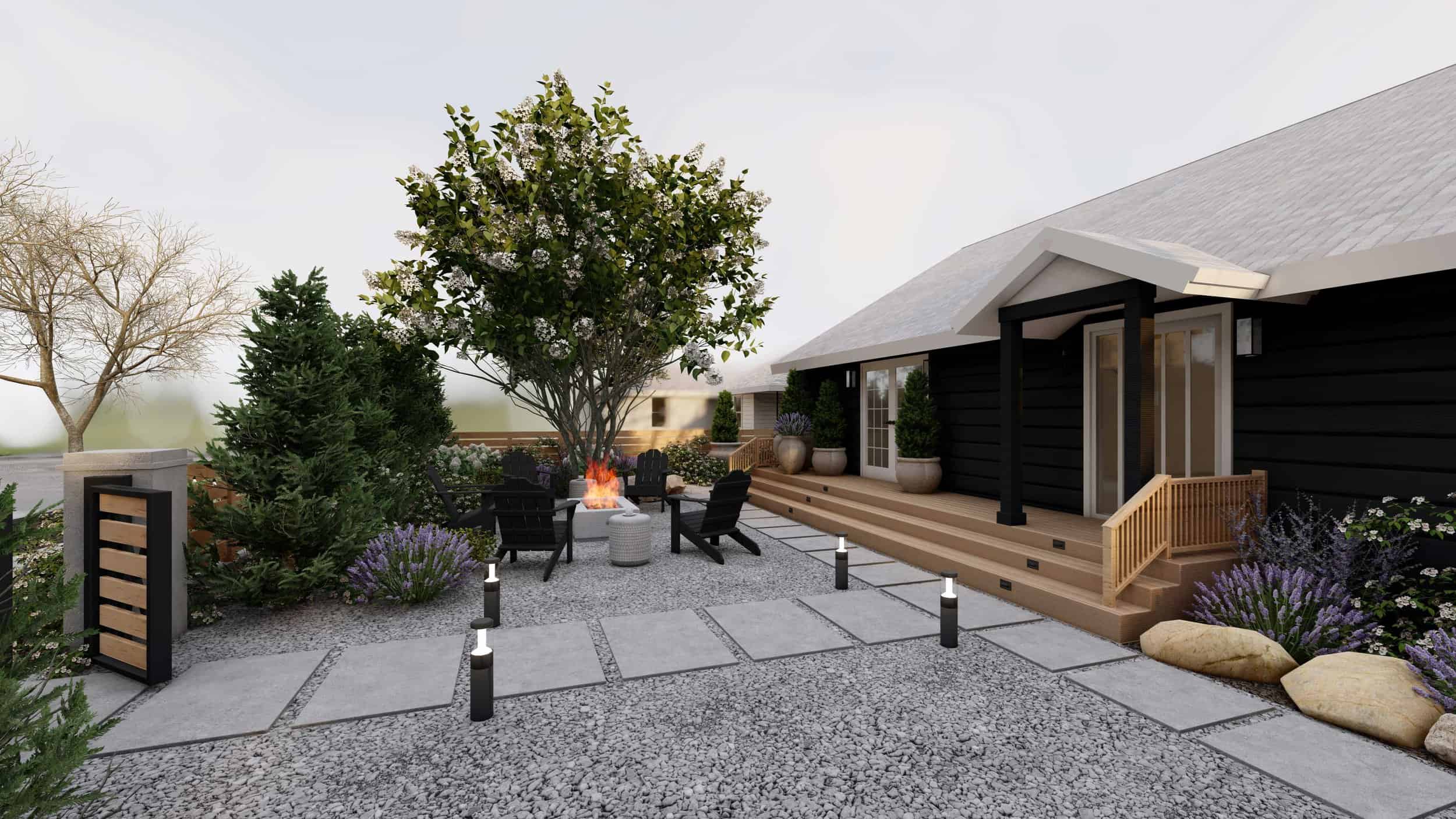
Image Credits: yardzen.com
b). Eye-Catching Landscapes
Grass alternatives bring in color, texture, and variety. From the deep greens of moss to the vibrant hues of drought-resistant flowers, a thoughtfully designed no-grass yard can be downright showstopping. Bonus: Your neighbors will totally ask for landscaping advice.
6. Climate Resilience

Image Credits: bhg.com
Some plants are built to thrive in tough conditions. Whether you live in a sun-scorched desert, a shady woodland, or somewhere that gets every season in full force, there’s a grass alternative that can handle it. Drought-tolerant succulents, moss gardens, or rain-loving ferns—there’s something for every climate.
7. Creativity and Personal Expression
a). Design Freedom
Grass is grass, but once you ditch it, you have a world of possibilities. Want a sleek Japanese-inspired space? Go for it. Prefer a whimsical cottage garden? That works too. Lawn-free landscaping means you get to design your yard instead of just maintaining it.
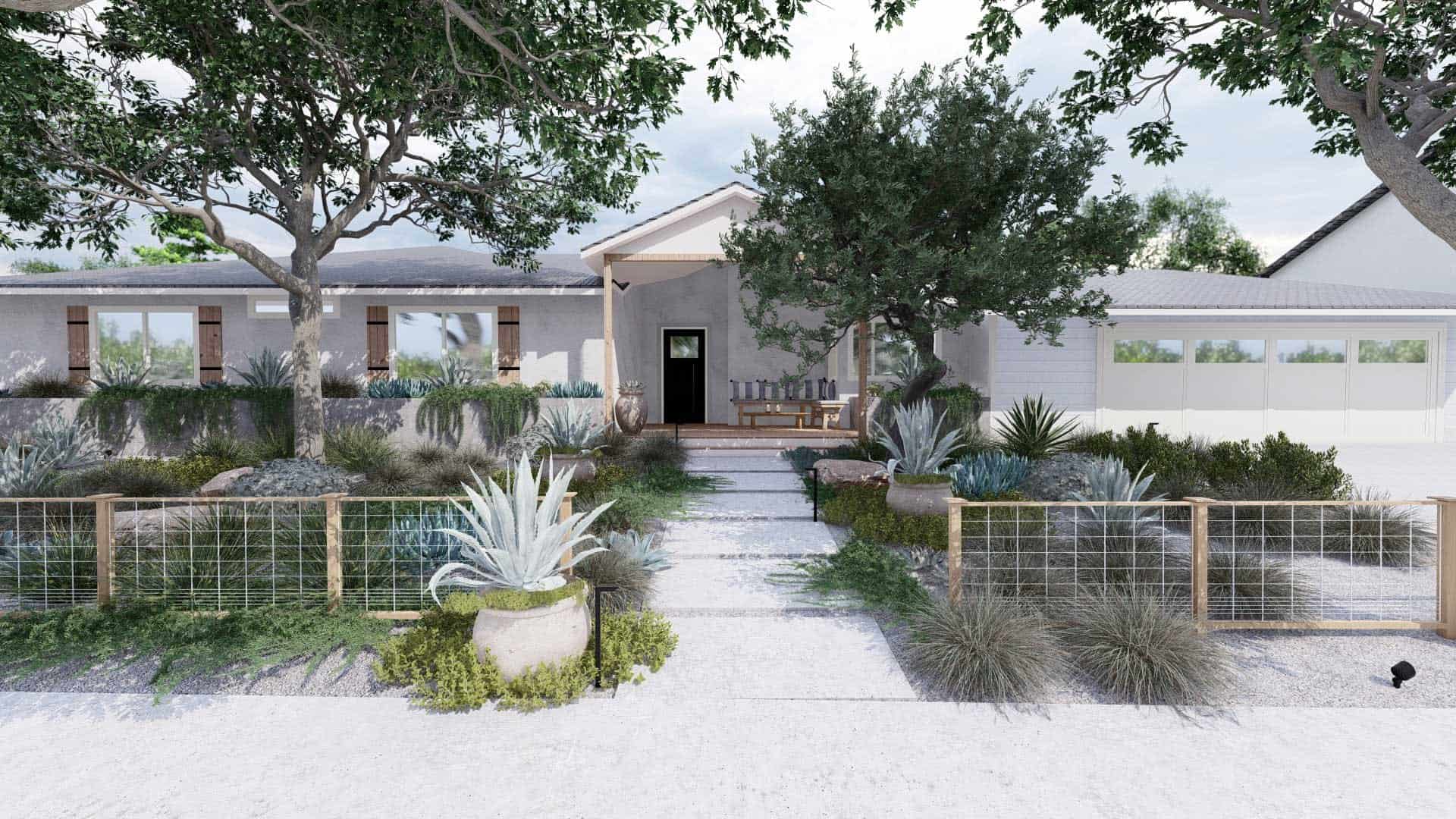
Image Credits: yardzen.com
b). Engaging Hobbies
Ever wanted to grow your own veggies? Start a wildflower meadow? Build a little rock meditation space? When your yard isn’t just a boring green mat, it becomes an actual place you enjoy spending time in.
8. Allergen Reduction
Traditional grass can be rough for allergy sufferers—pollen, mold, and all those chemicals floating around aren’t great for your lungs. Swapping it out for a rock garden, mulch, or low-allergen plants means way fewer sneezes and itchy eyes when you step outside.
Conclusion
Replacing grass in your front yard opens creative possibilities to express your style while contributing to a more sustainable environment. From native plant gardens to sustainable ground covers, each alternative offers its unique charm and benefits. Consider the specific conditions of your property, your climate, and your preferences to choose the perfect grass substitute that will enhance the beauty of your front yard for years to come. Whether you opt for a vibrant wildflower meadow or a calming Japanese-inspired garden, you can create an eye-catching and eco-friendly landscape that becomes the envy of the neighborhood.














